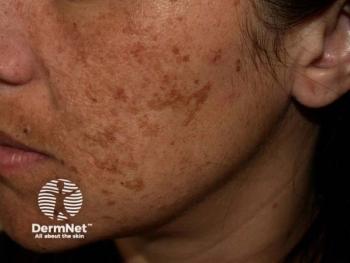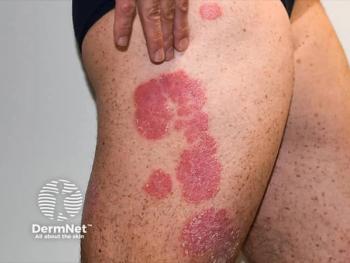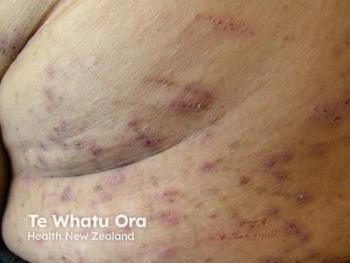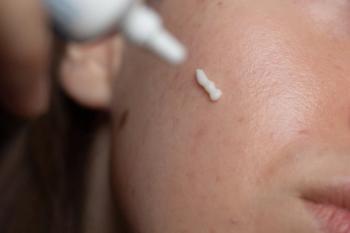
Castle Biosciences’ DecisionDx-Melanoma Test Earns FDA Breakthrough Device Designation
Key Takeaways
- DecisionDx-Melanoma test offers personalized risk classification by evaluating 31 genes, aiding in sentinel lymph node metastasis and recurrence assessment.
- Clinical studies show DecisionDx-Melanoma outperforms traditional staging systems, with low-risk patients having significantly lower SLN positivity rates.
Castle Biosciences’ DecisionDx-Melanoma test plays a role in melanoma management with precise risk stratification, enhancing patient outcomes and reducing unnecessary surgeries.
This designation is reserved for devices that demonstrate the potential to offer more effective diagnosis or treatment of life-threatening or irreversibly debilitating conditions than current standard-of-care options.
A Shift in Early Melanoma Management
DecisionDx-Melanoma evaluates the activity of 31 genes in primary cutaneous melanoma tumor tissue to deliver a personalized risk classification. This helps clinicians more accurately assess the likelihood of sentinel lymph node (SLN) metastasis and recurrence. The goal is to support risk-aligned decision-making that improves outcomes and reduces patient morbidity.
"DecisionDx-Melanoma provides valuable biological insights that help inform clinicians’ post-diagnosis decision making based on a patient's individual predicted risk of metastasis," said Derek Maetzold, president and chief executive officer of Castle Biosciences, in a news release.1 "We believe the clinical performance of our DecisionDx-Melanoma test is unmatched by other tests currently on the market, both in its ability to provide precise and clinically meaningful risk stratification as well as accurate predictions of sentinel lymph node positivity."
Clinical Evidence Backing the Designation
The designation follows recent data demonstrating the test’s ability to outperform traditional clinicopathologic staging systems and other gene expression-based models.
In a recent study published in Cancer Diagnosis & Prognosis, researchers compared 5 CP-GEP (clinicopathologic and gene expression profile) validation studies and 4 DecisionDx-Melanoma validation studies, focusing on patients with T1–T2 melanomas.2 Their findings revealed that patients categorized as low-risk by DecisionDx-Melanoma had a 2.8% SLN positivity rate—significantly below the 5% threshold set by the National Comprehensive Cancer Network for omitting SLNB.3 In contrast, the CP-GEP model failed to outperform AJCC staging and yielded a 6.2% positivity rate.
"Our study confirms that DecisionDx-Melanoma achieves this by providing significant risk stratification, outperforming the standard of care and the CP-GEP genomic test," said lead author Peter Prieto, MD, MPH, surgical oncologist at the University of Rochester Medical Center.2
The DECIDE Study: 100% Recurrence-Free Survival in Low-Risk Patients
The results are further supported by findings from the DECIDE study, a prospective, multicenter clinical trial whose recent publication in Cancer Medicine reinforces the test’s real-world utility. Patients with a Class 1A DecisionDx-Melanoma result had a 100% 3-year recurrence-free survival rate, even when SLNB was not performed.4
The outcome not only highlights the test’s ability to safely identify patients who can forgo surgery but also highlights the economic and psychological burden that can be alleviated when clinicians have robust genomic data guiding treatment choices.
"The less unnecessary surgery we do, the better," said J. Michael Guenther, MD, lead author of the DECIDE study and surgical oncologist, in a
A Clinical Tool for Risk Refinement
Because dermatology clinicians are often the first specialists to diagnose melanoma, tools that can rapidly inform prognosis are crucial. According to Matthew Goldberg, MD, Castle’s senior vice president of medical affairs, DecisionDx-Melanoma delivers results within 4 to 5 working days, allowing for timely incorporation into treatment planning.
"Dermatologists are really at the forefront of melanoma diagnosis," Goldberg noted. "I think that for me, the strategic vision of the DecisionDx-Melanoma test is essentially to refine the prognostic accuracy for patients diagnosed with cutaneous melanoma. What this means is: Can we do better as a subspecialty, as clinicians, in risk stratifying our patients who are diagnosed with this impactful cancer beyond the clinical and pathologic factors that we have access to at the time of diagnosis?"
Goldberg also emphasized that DecisionDx-Melanoma plays a crucial role in navigating the "gray zone" of patients whose SLN positivity risk lies between 5% and 10%, a range that often leads to difficult clinical decisions.
Streamlining Practice and Reducing Costs
From a health economics standpoint, avoiding SLNB when unnecessary can reduce both immediate procedural risks, such as infection, seroma, and lymphedema, and long-term complications. Given that only about 12% of patients undergoing SLNB have positive nodes,4 tools that minimize overtreatment are increasingly valuable in cost-conscious, outcome-driven care models.
"I think this is an exciting moment for precision medicine," Goldberg said. "This [is a] moment of personalized medicine or precision medicine, where, to me, the challenge is: Can we do better than our histopathologic correlates? Can we do better than staging to refine our engine of prognosis for the benefit of the patients that we care for in the clinic?"
References
- FDA grants Breakthrough Device designation to Castle Biosciences’ DecisionDx-Melanoma test. News release. Castle Biosciences. July 23, 2025. Accessed July 23, 2025.
https://www.biospace.com/press-releases/fda-grants-breakthrough-device-designation-to-castle-biosciences-decisiondx-melanoma-test - Prieto PA, Ferris LK, Guenther MJ. Comparing two gene expression profile tests to standard of care for identifying patients with cutaneous melanoma at low risk of sentinel lymph node positivity. Cancer Diagn Progn. 2025;5(3):261-267.
doi:10.21873/cdp.10438 - Ishizuki S, Nakamura Y. Role of sentinel lymph node biopsy for skin cancer based on clinical studies. Cancers (Basel). 2023;15(13):3291.
doi:10.3390/cancers15133291 - Guenther JM, Ward A, Martin BJ, et al. A prospective, multicenter analysis of recurrence-free survival after sentinel lymph node biopsy decisions influenced by the 31-GEP. Cancer Med. Published online April 1, 2025. doi:10.1002/cam4.70839
Newsletter
Like what you’re reading? Subscribe to Dermatology Times for weekly updates on therapies, innovations, and real-world practice tips.


















